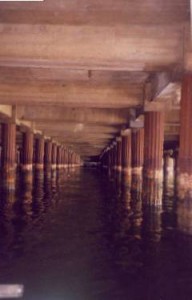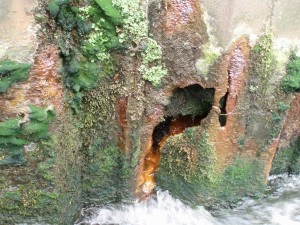Survey, repair and protection
There are a number of tools available to enable evaluation of concrete condition in service, that also give the ability to assess state and condition, residual life and various options for repair based on asset owner expectations.
I have extensive experience in condition assessment of structures, and am able to provide a comprehensive service of condition of concrete structures, applied with repair optioneering studies based on the estimated residual life of the structure with whole-life costing analysis and remediation specifications.
Survey
Surveys can take a number of forms depending on the nature of the structure and the outline brief of the survey requirements. Survey work on condition should always be carried out by experienced professional using suitable and appropriate safe access to the structure. It is sometimes necessary to take samples from the structure to further establish the cause of deterioration. The table below provides summary guidance on a range of typical defects and their associated testing actions. The list os not exhaustive but probides some guidance on the most common defects and actions.
| Observed defect | Possible causes | In-situ sampling or testing | Related testing and action |
| Spalling Cracking along line of reinforcement | Reinforcement corrosion | Coring Incremental dust samples Covermeter Carbonation depth Half-cell potential survey | Core inspection Chloride contents on incremental samples Cement content |
| Loss of surface | Abrasion Frost damage Salt weathering |
Visual exam of wear Coring | Chloride content Sulfate content |
| Cracks on top of surface slabs | Plastic shrinkage | Coring | Inspection |
| Map cracking | Alkali aggregate reactivity | Coring | Petrographic examination Expansion testing |
| Surface crazing | Frost attack Poor curing | Coring | Inspection Petrographic examination |
| Cracking/ disintegration of foundations | Sulfate attack | Lump samples | Sulfate content |
| Other cracks | Plastic shrinkage | Coring | Inspection |
| Early thermal movement | Crack mapping | Construction history | |
| Structural (inadequate capacity) | Coring | Design checks Compressive strength Cement content | |
| Mechanical damage/ leaching | Impact/ abrasion Biological/ bacterial attack | Visual inspection Coring | Petrographic examination |
Repair and protection
Various repair options are available for consideration:
- Do nothing – no work required, or at least work may be postponed in favour of more significant work later
- Prevention/protection work – without prior repair (e.g.apply shotcrete layer to protect existing damaged surface)
- Protection – after repair (e.g. apply coating after patch repair of spalling concrete)
- Partial restoration – to acceptable condition but lower than initial design performance
- Full restoration – to initial design performance
- Upgrading – strengthening to performance levels beyond the initial requirements
Numerous repair methods are available and the selection of the correct method will be dependent on the nature of the defect, its location, expected performance of the structure, cost, and so on. BS EN 1504 gives guidance on the processes for selecting appropriate repair techniques.
For more information on repair strategies contact info@jkmc.co.uk

